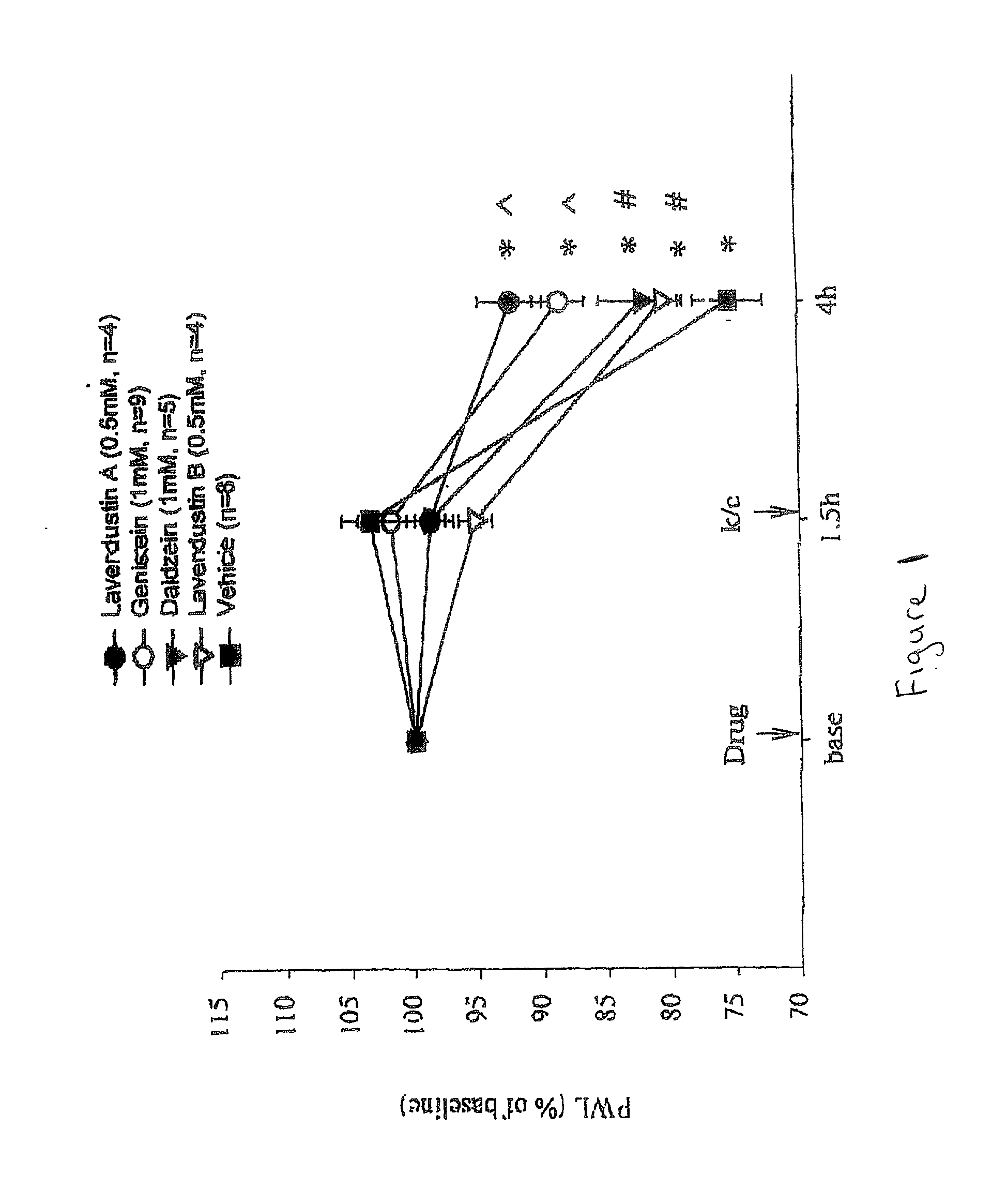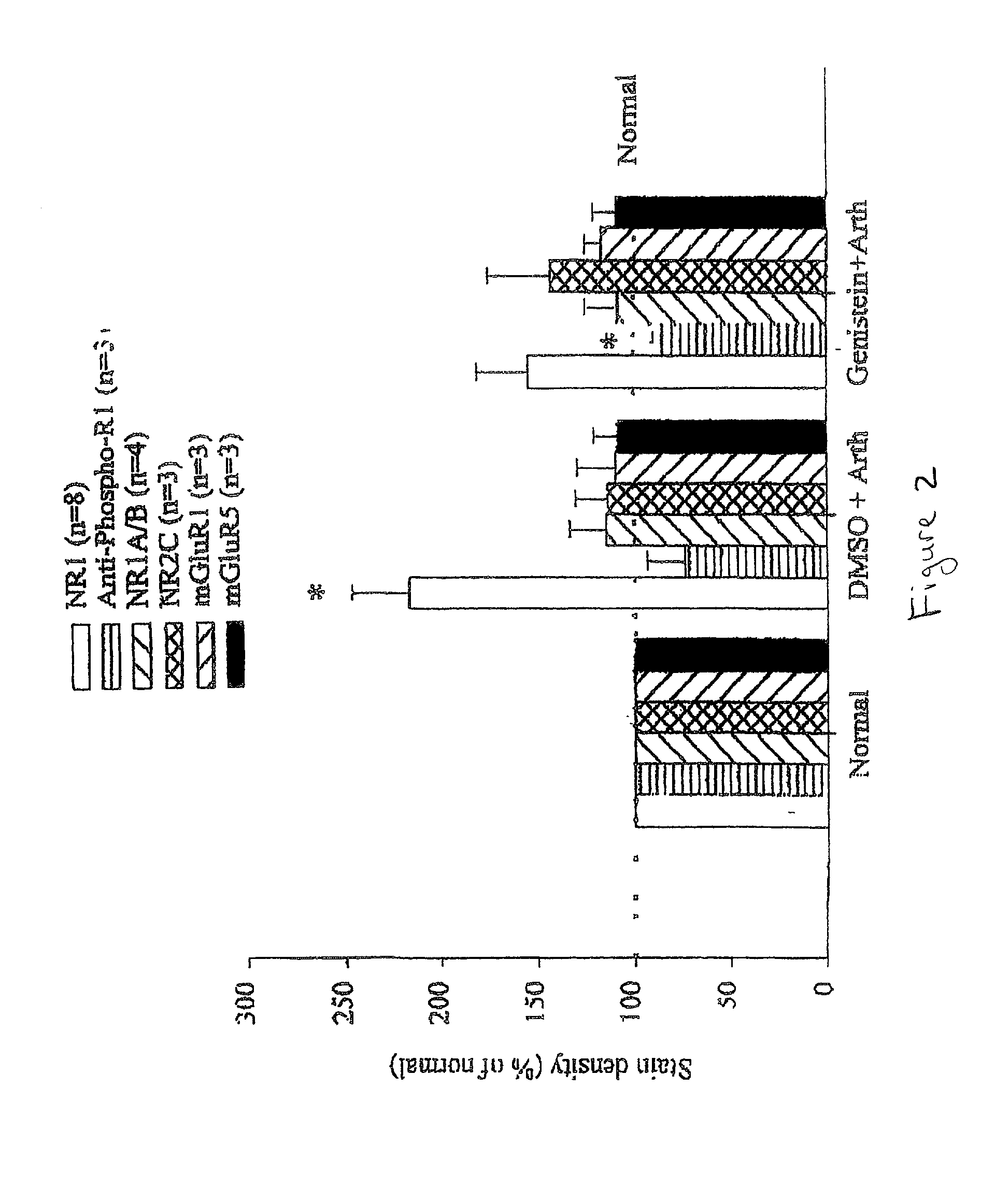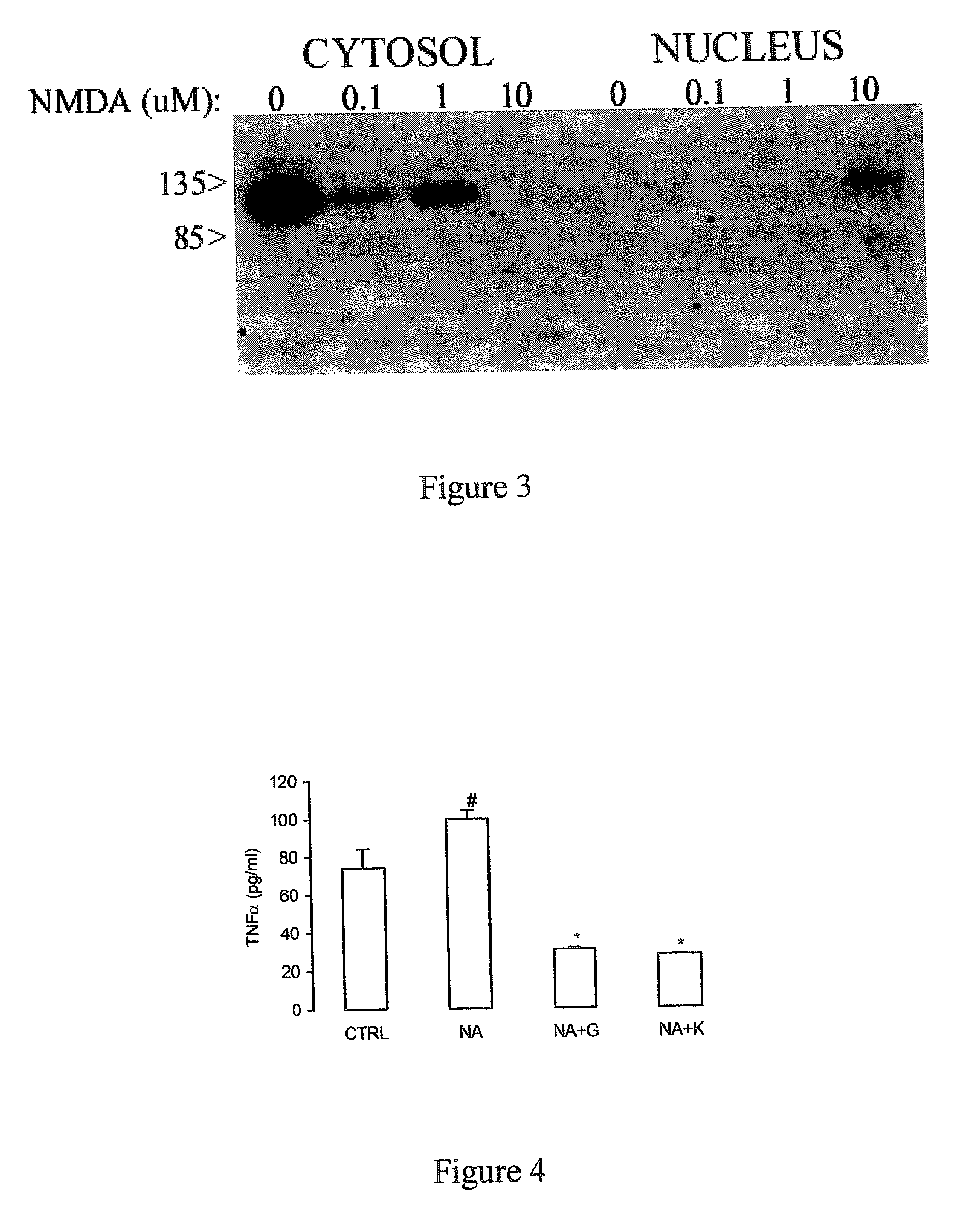Methods for treating neuropathological states and neurogenic inflammatory states and methods for identifying compounds useful therein
a neuropathological state and neurogenic inflammatory state technology, applied in the field of neuropathological states and neurogenic inflammatory states, can solve the problems of long-lasting pathological levels of pain and nervous tissue damage, poisoning and killing nerve cells, and large amount of glutamate escape and can be destructiv
- Summary
- Abstract
- Description
- Claims
- Application Information
AI Technical Summary
Benefits of technology
Problems solved by technology
Method used
Image
Examples
example 1
[0068] Methods
[0069] Animals
[0070] All studies followed the guidelines of the Institute Animal Care and Use Committee, in accordance with the guidelines of the National Institutes of Health. All animals were hosted in a room with a constant ambient temperature of 22.degree. C. and 12 hour light / dark cycle with free access to food and water. Eighty-five Sprague-Dawley rats (250-300 grams) total were used in experiments conducted for biochemical, behavioral, and immunocytochemistry studies. On Day 1, anesthetized animals received surgical implantation of a microdialysis fiber for spinal administration of tyrosine kinase inhibitors and inactive analogues. On Day 2 baseline behavioral testing was followed by infusion of agents for 1.5 hours (pretreatment) prior to induction of knee joint inflammation under brief anesthesia. Behavioral testing was repeated 4 hours after induction of joint inflammation. Anesthetized animals were either transcardially perfused with aldehydes for immunohist...
example 2
[0102] This example demonstrates that the translocation of NR1 subunit that was observed in animals also occurs in cultured cell lines.
[0103] Ex vivo Studies
[0104] The cultured cell lines used in these studies were the human neuroblastoma clonal line, SHSY5Y, and the human synovial sarcoma clonal line, SW982, both available through the American Tissue Type Culture Collection (item number CRL 2266 and HTB-93, respectively). Cells were grown in Dulbecco's Modification of Eagles Medium (DMEM) without L-glutamine, with 4.5 grams / Liter glucose, and with 10% bovine fetal serum in a tissue culture incubator at 37.degree. C. in a gaseous mixture of O.sub.2 / CO.sub.2. Cells were routinely split as necessary to maintain proper cell density. Cells were removed from plates by adding TRYPSIN / EDTA in Hank's Balanced Salt solution. After cell counts, approximately 10,000 cells were plated per well in a culture dish. For experiments, the cells were plated into 35 mm Petri dishes or 6- or 24-well pla...
PUM
| Property | Measurement | Unit |
|---|---|---|
| temperature | aaaaa | aaaaa |
| outer diameter | aaaaa | aaaaa |
| pH | aaaaa | aaaaa |
Abstract
Description
Claims
Application Information
 Login to View More
Login to View More - R&D
- Intellectual Property
- Life Sciences
- Materials
- Tech Scout
- Unparalleled Data Quality
- Higher Quality Content
- 60% Fewer Hallucinations
Browse by: Latest US Patents, China's latest patents, Technical Efficacy Thesaurus, Application Domain, Technology Topic, Popular Technical Reports.
© 2025 PatSnap. All rights reserved.Legal|Privacy policy|Modern Slavery Act Transparency Statement|Sitemap|About US| Contact US: help@patsnap.com



